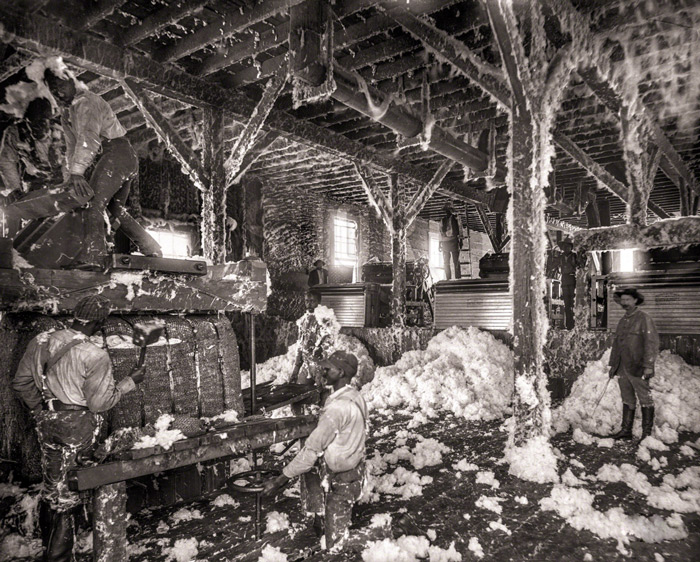Ginning
Apr 14, 2016
 In the fall of 1898, these men were hard at work in a cotton gin in Bolivar County in north Mississippi.
In the fall of 1898, these men were hard at work in a cotton gin in Bolivar County in north Mississippi.
1898 was a depression year; cotton was selling for barely 5 cents a pound. Out in the fields, the wages for cotton pickers had dropped from the going rate in the early 1890s of about 50 cents per hundred pounds, which was what an average adult could pick in a day, down to 42 cents.
But most cotton in those years was grown not by wage laborers but by tenant farmers or sharecroppers. Tenants paid plantation owners about 2 bales of cotton (1,000 pounds) each year for a 40-acre plot; sharecroppers split the crop with the landowner, 50-50 or 25-75, depending on who provided the mule and who provisioned the family till the crop came in.
This lazy researcher was not readily able to learn how much the gin workers were paid, but we can be sadly certain that it was not much.